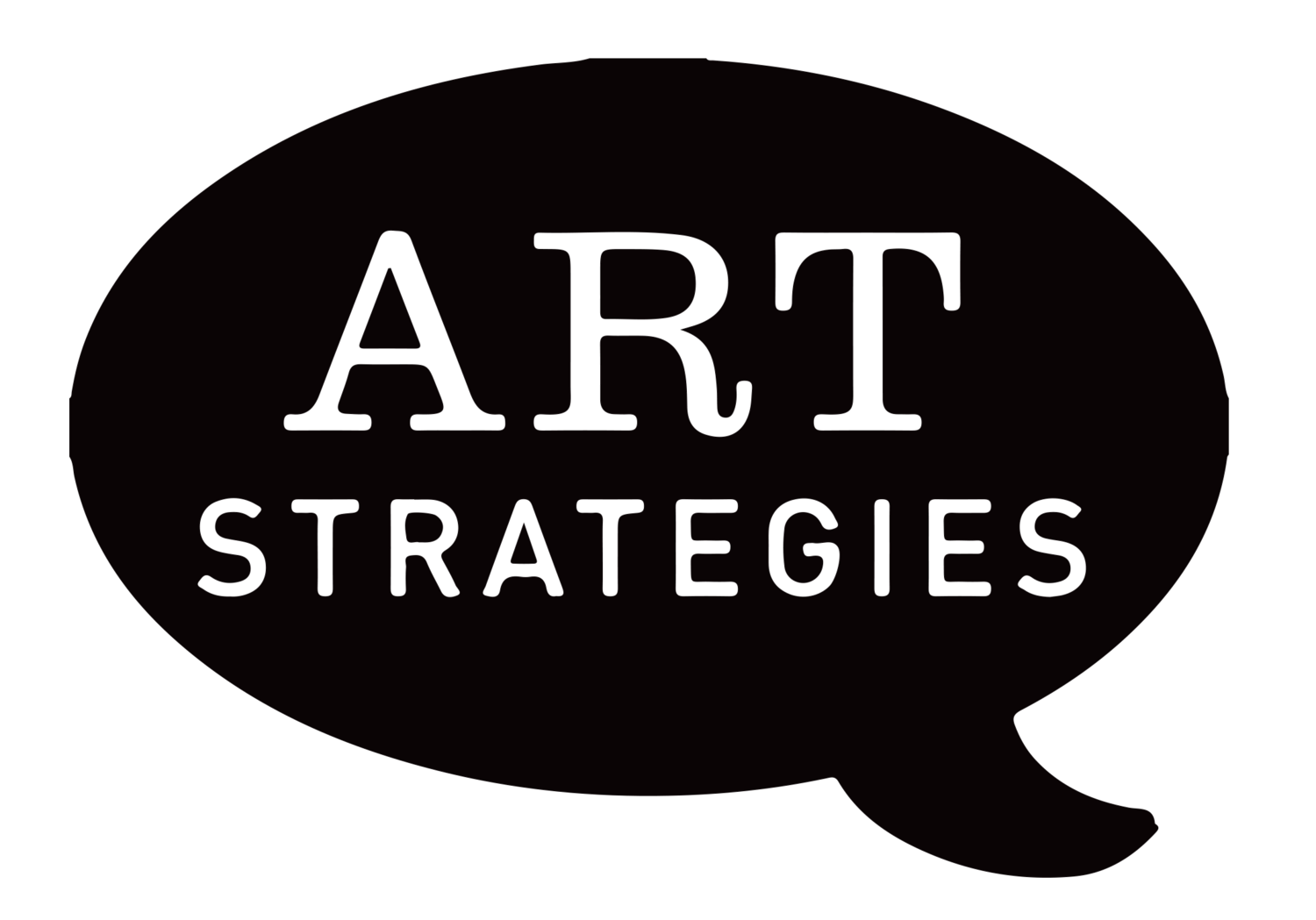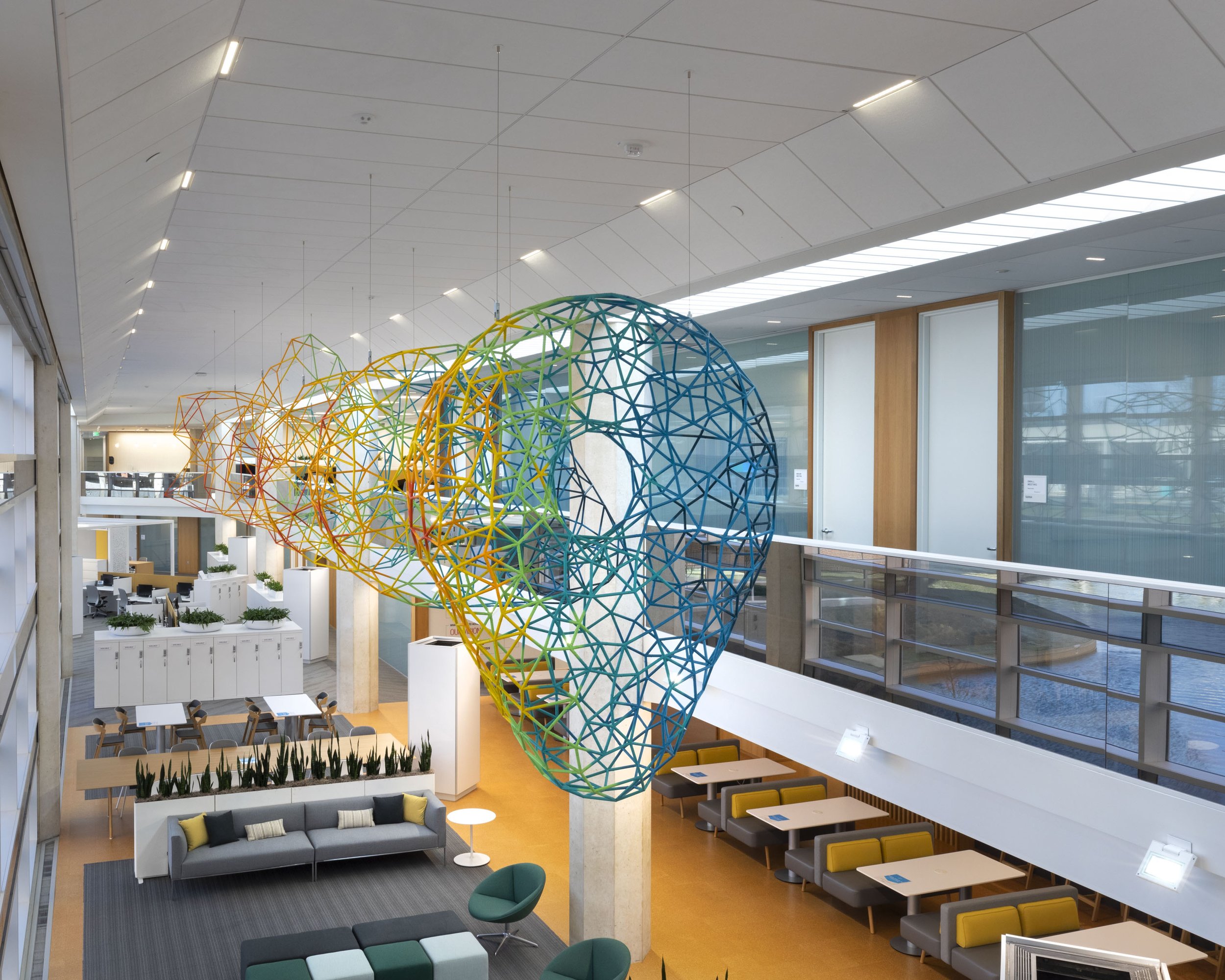
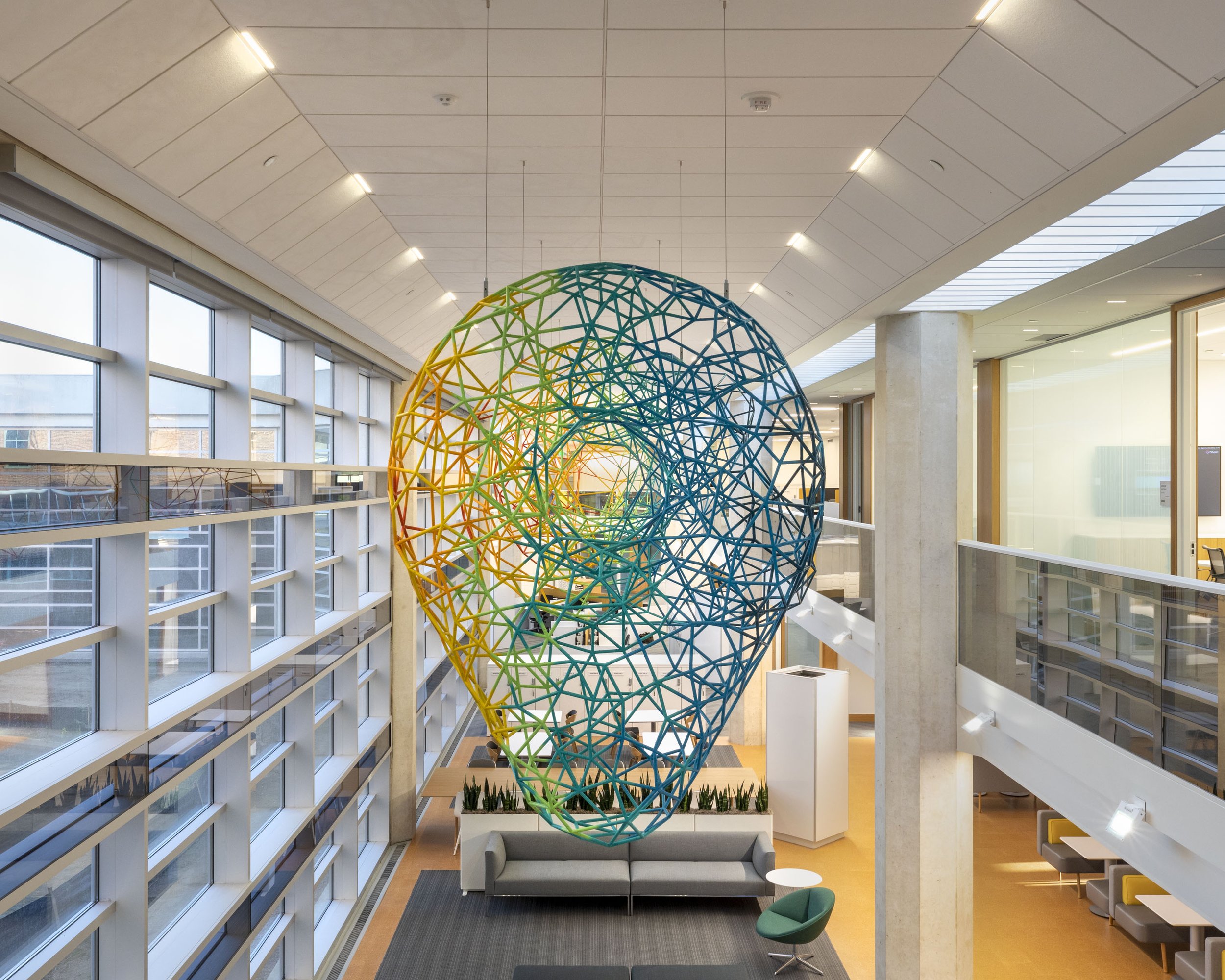
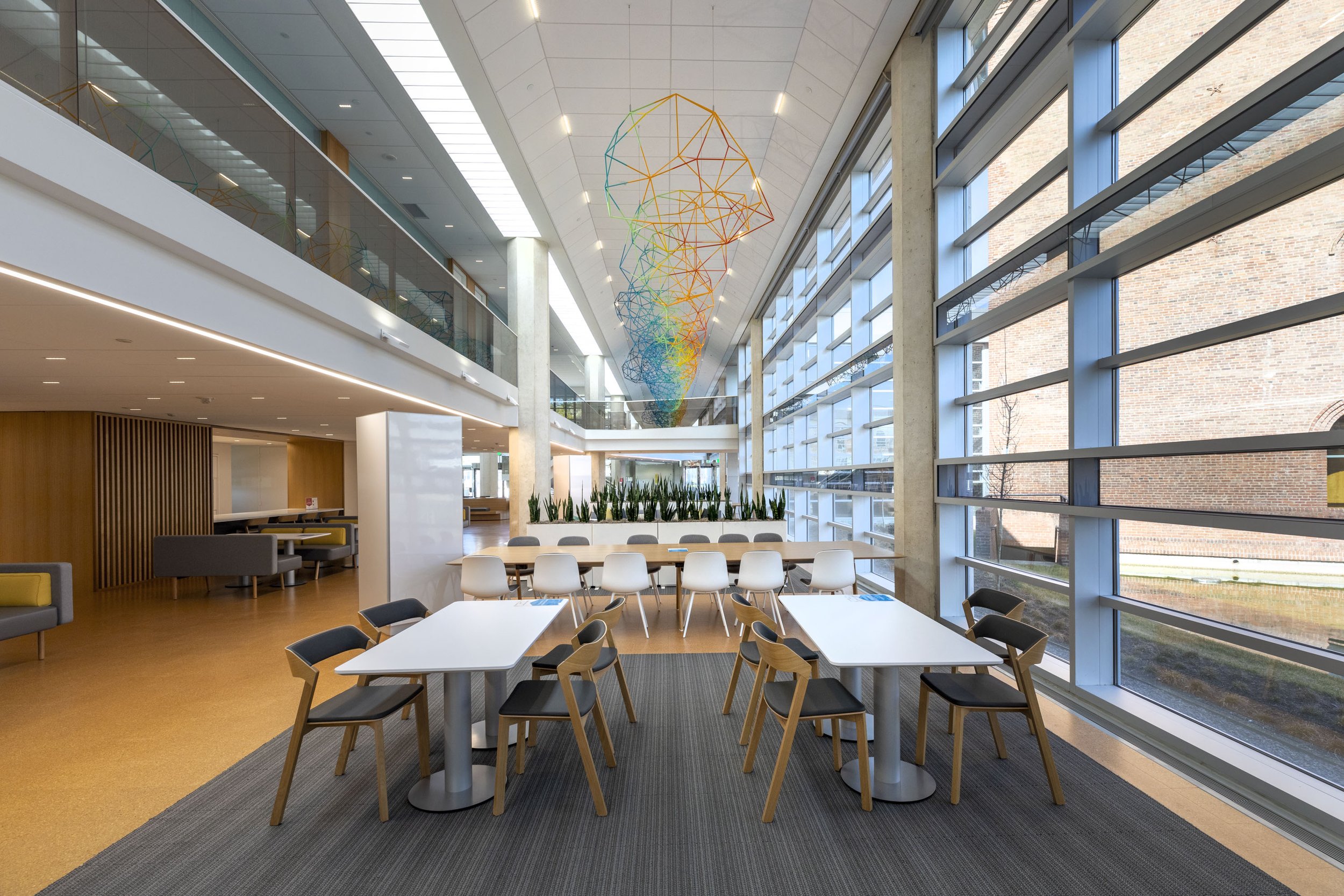
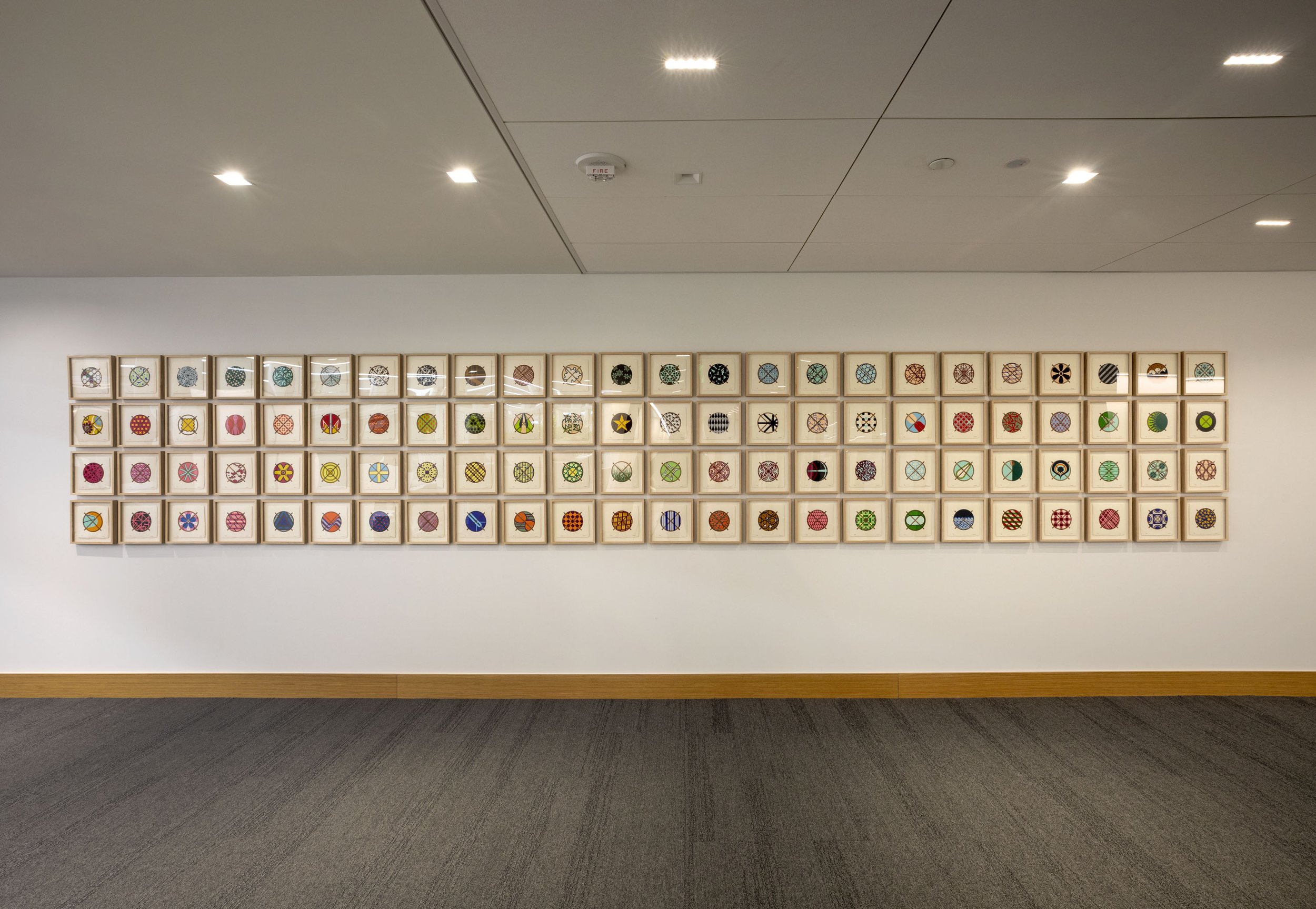
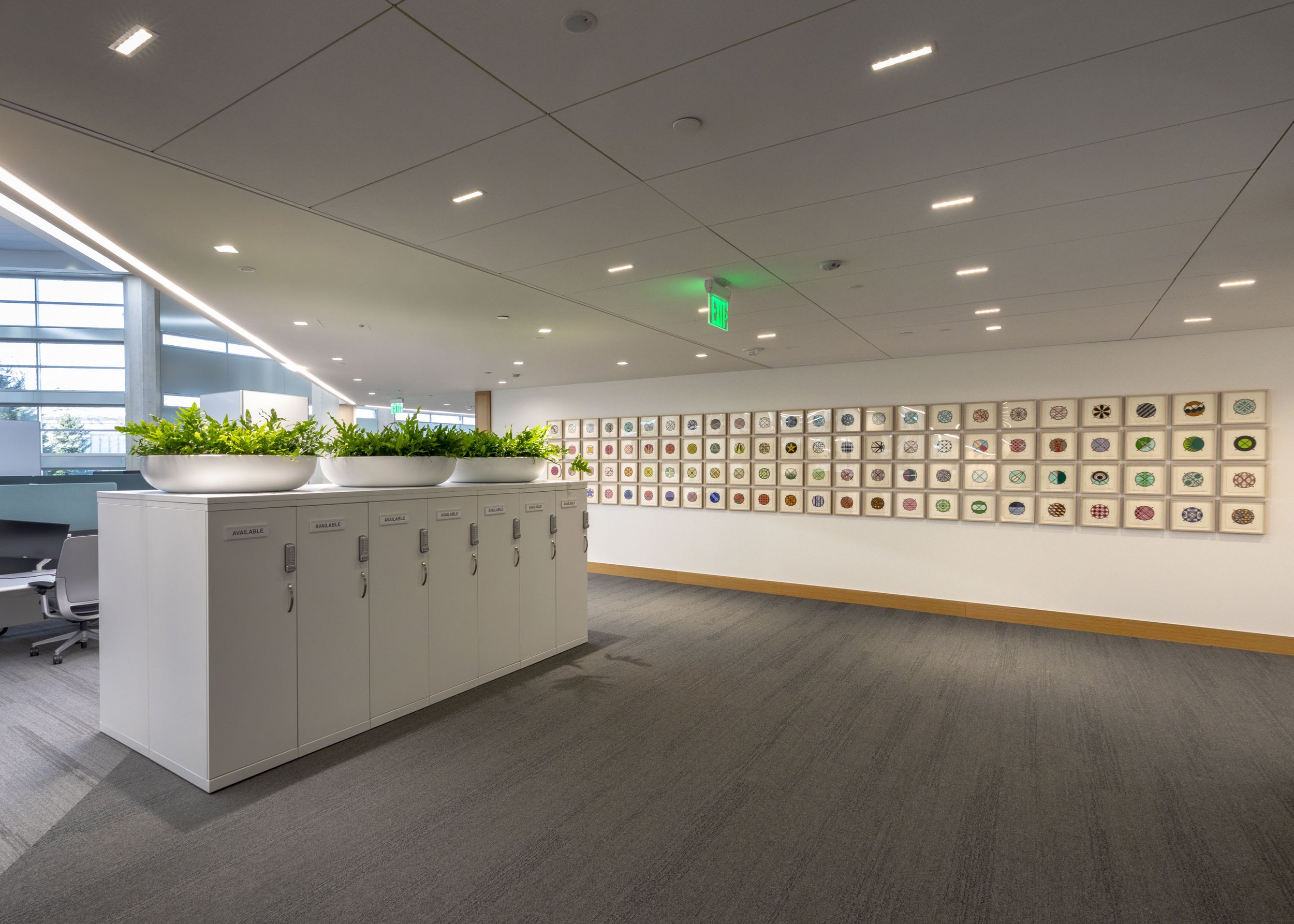
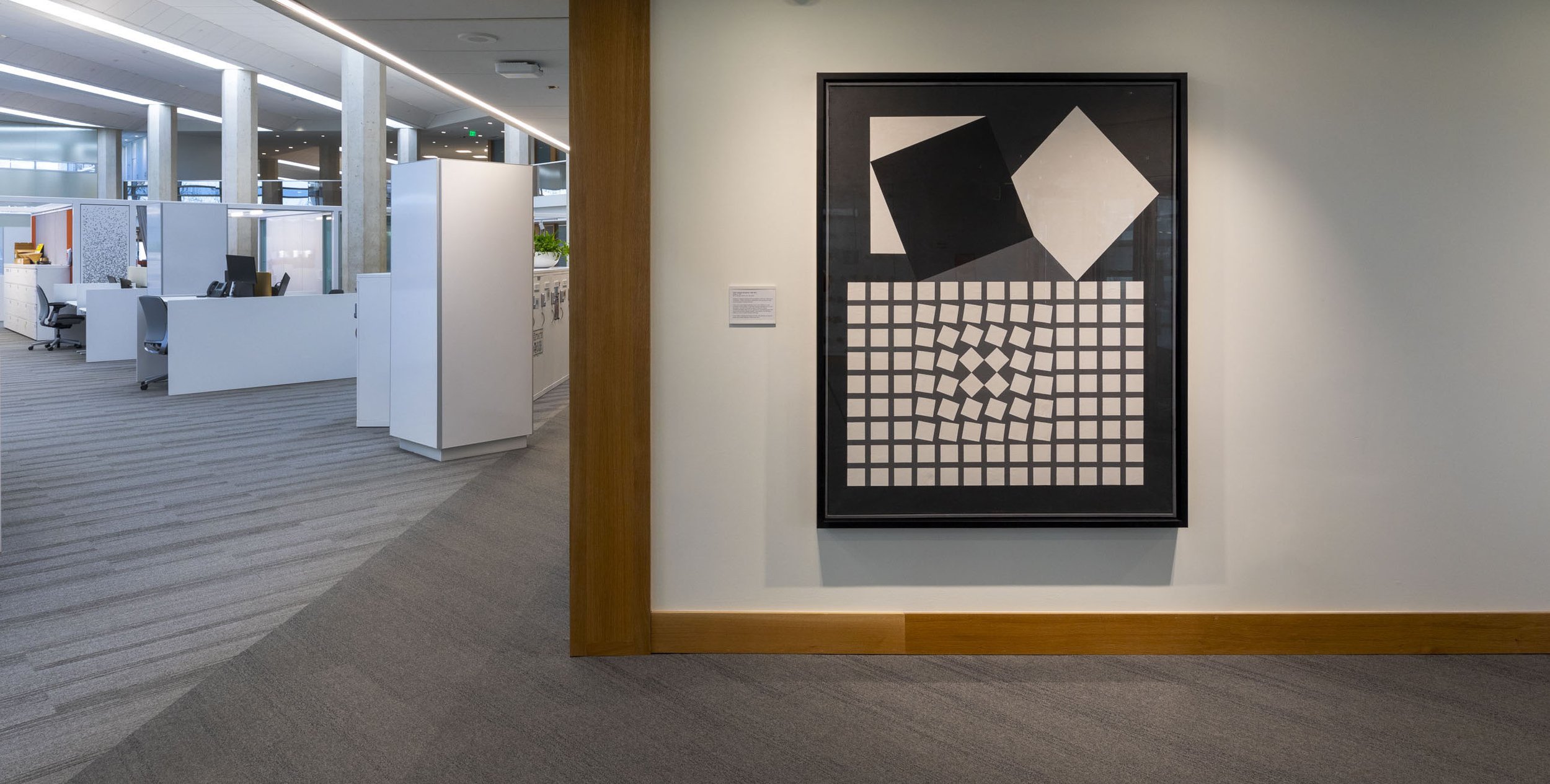
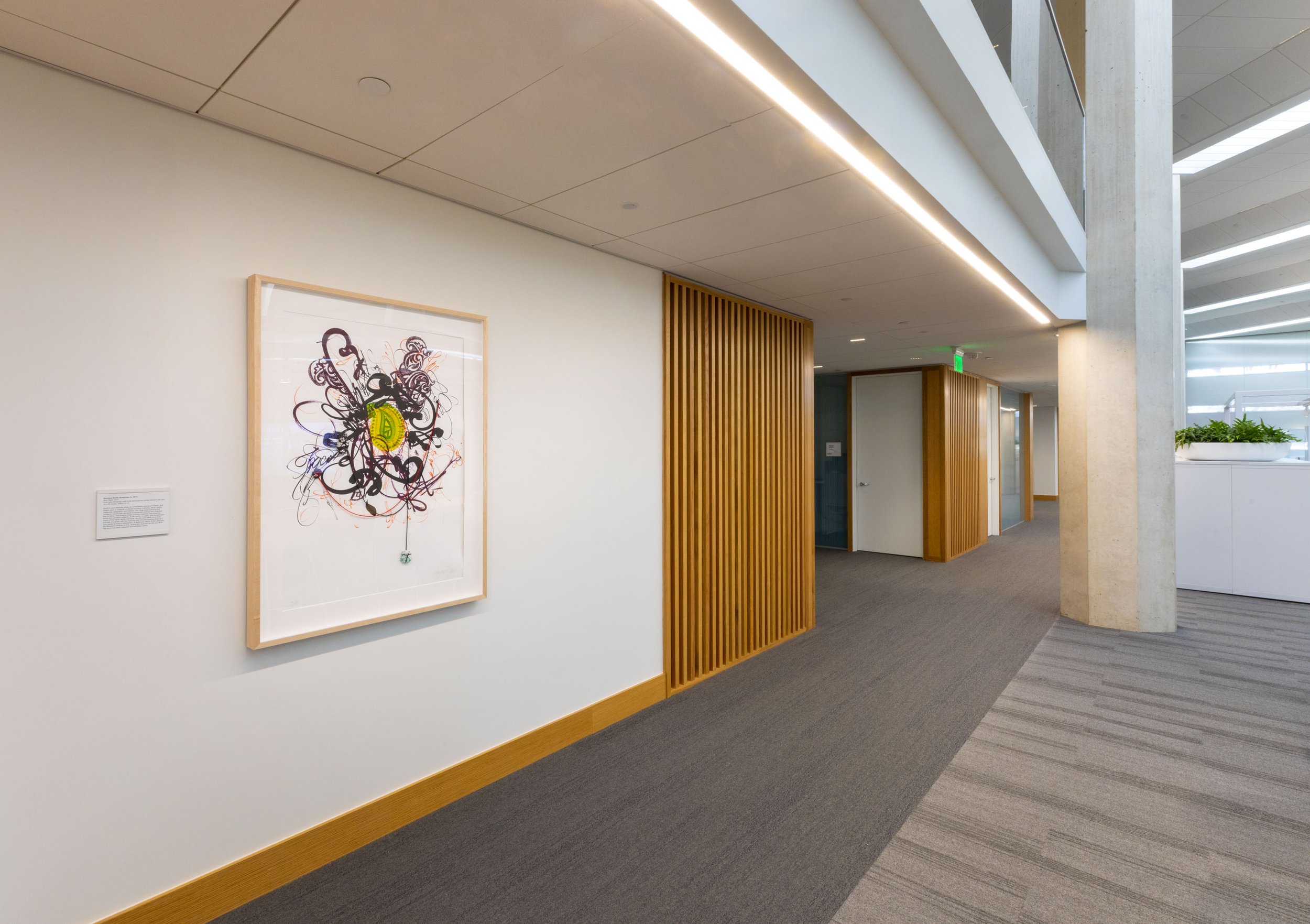
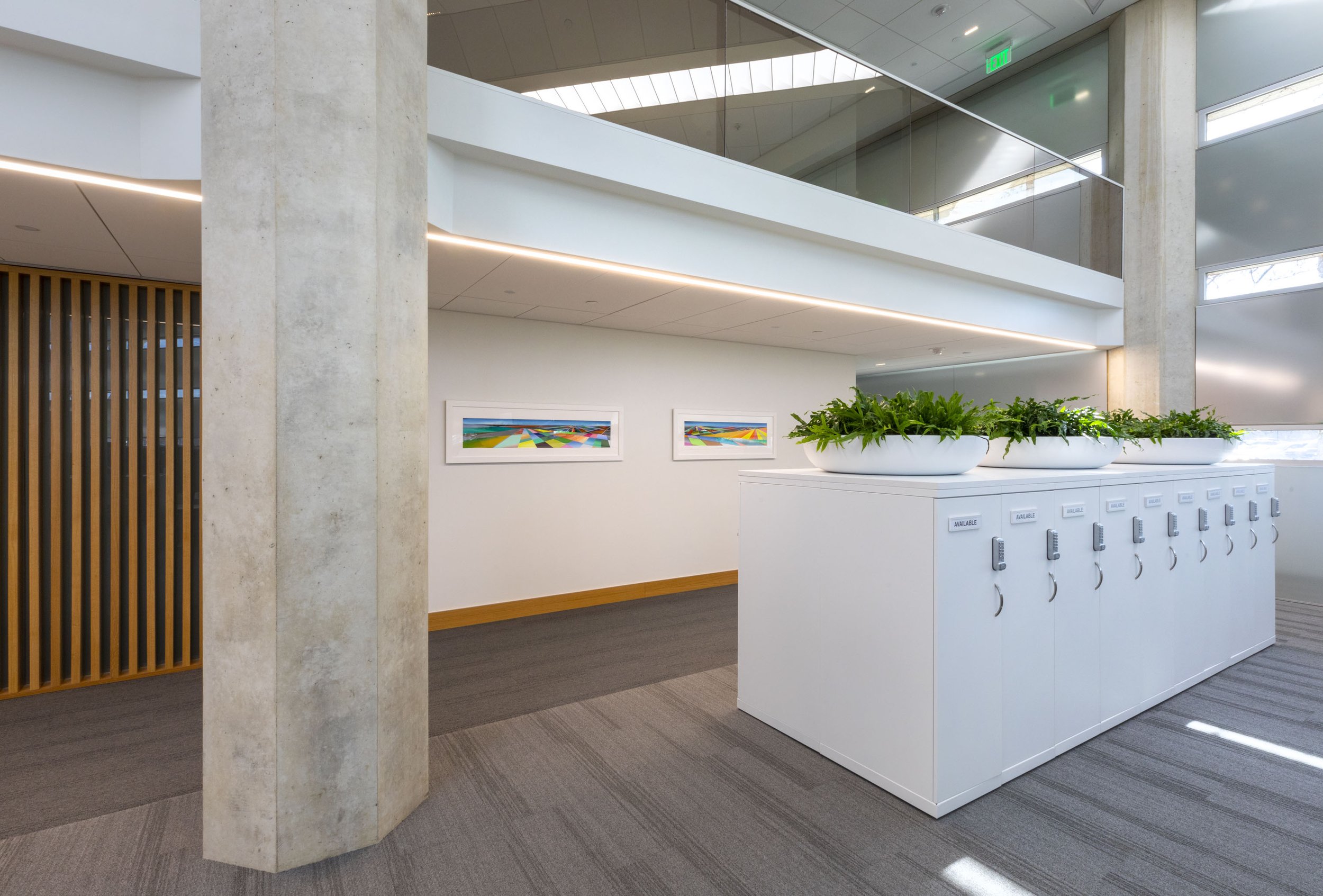
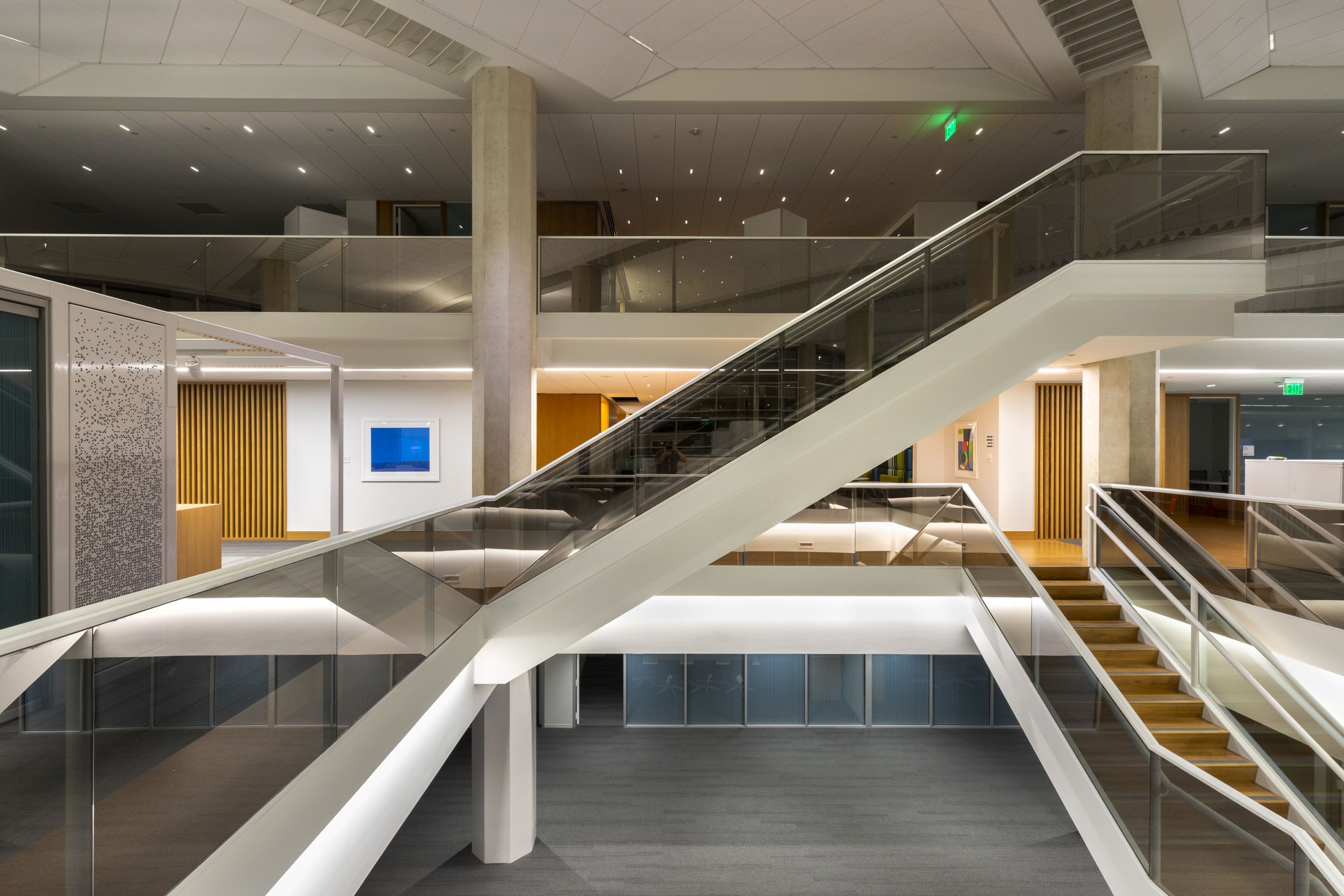
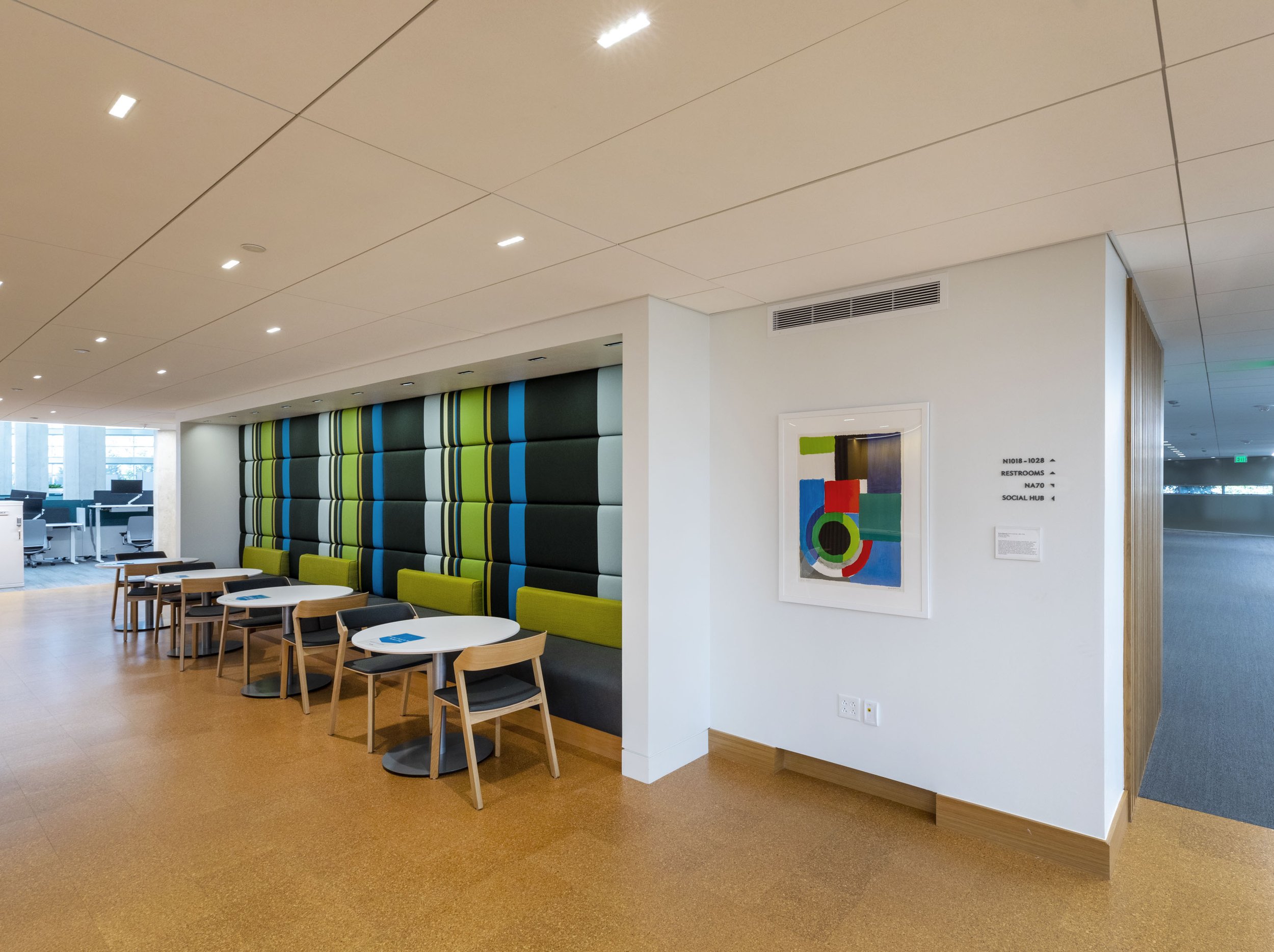
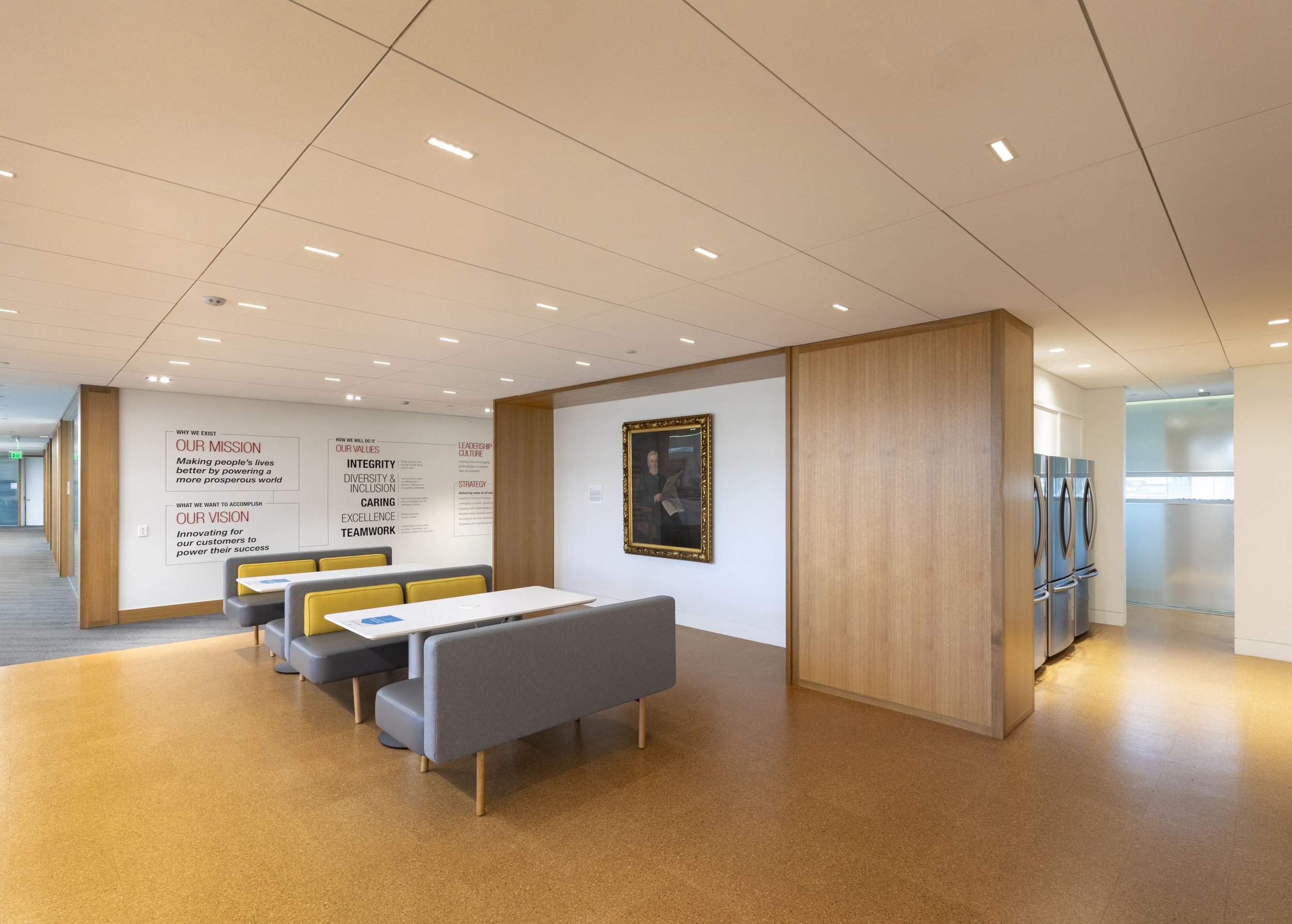
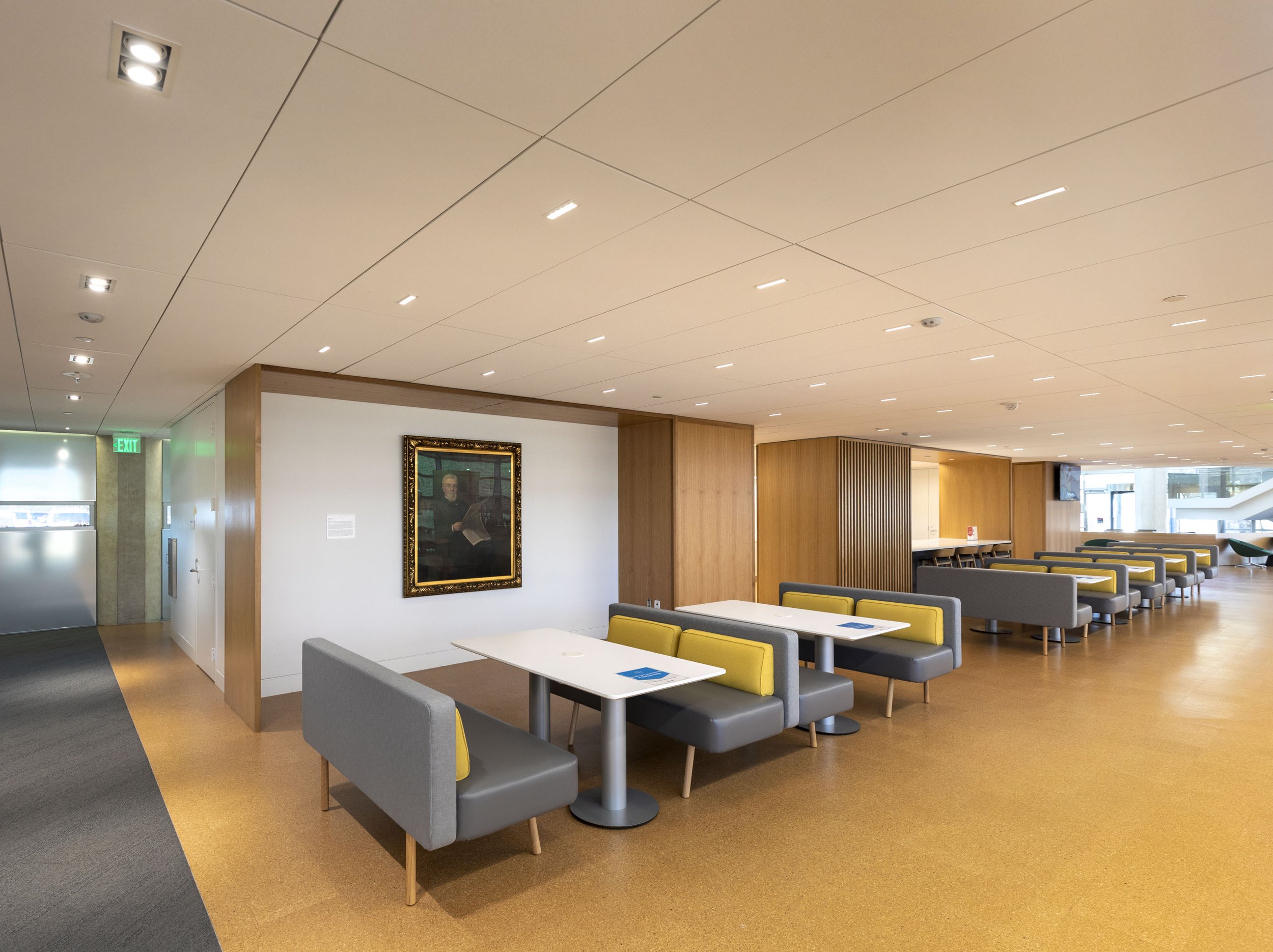
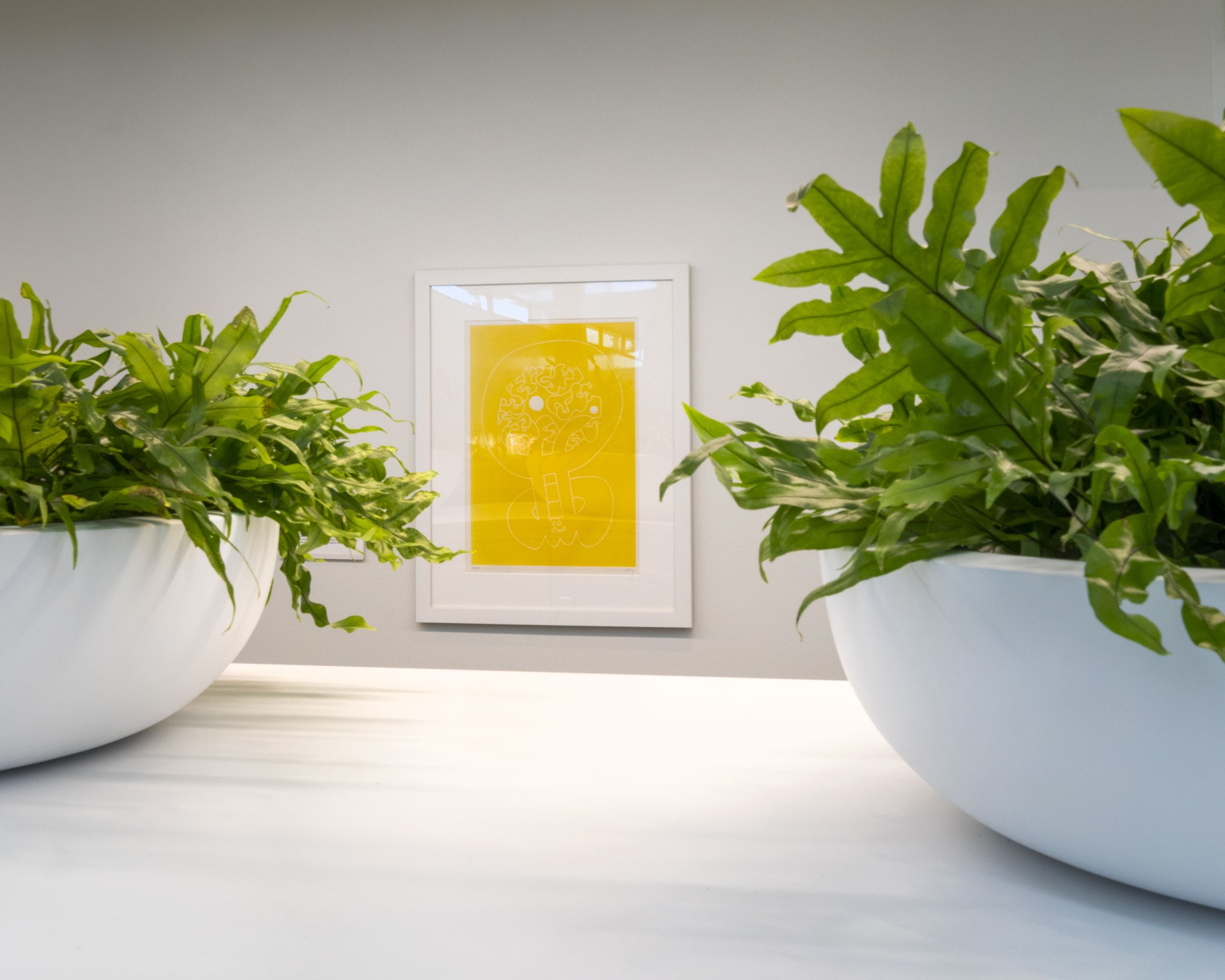
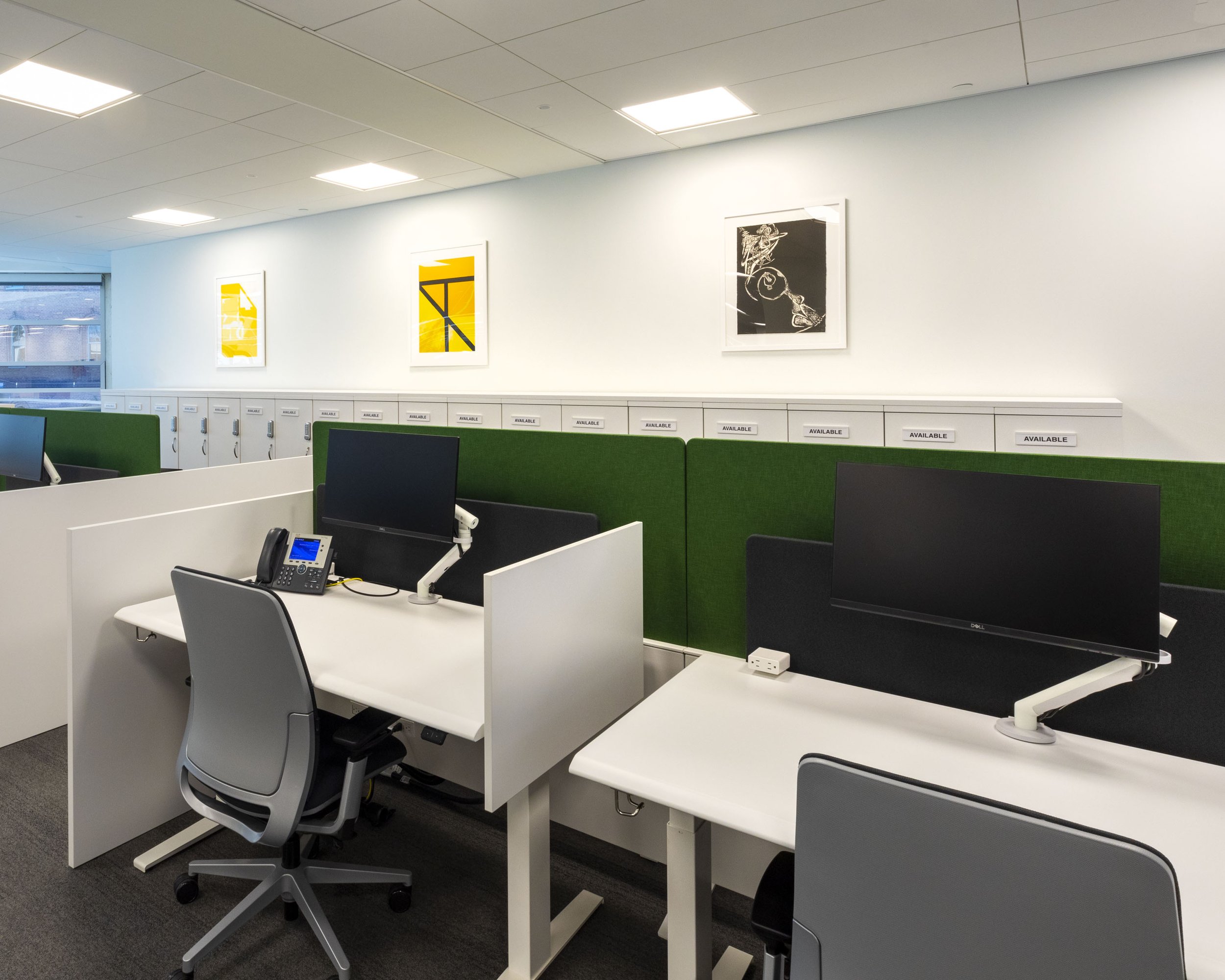
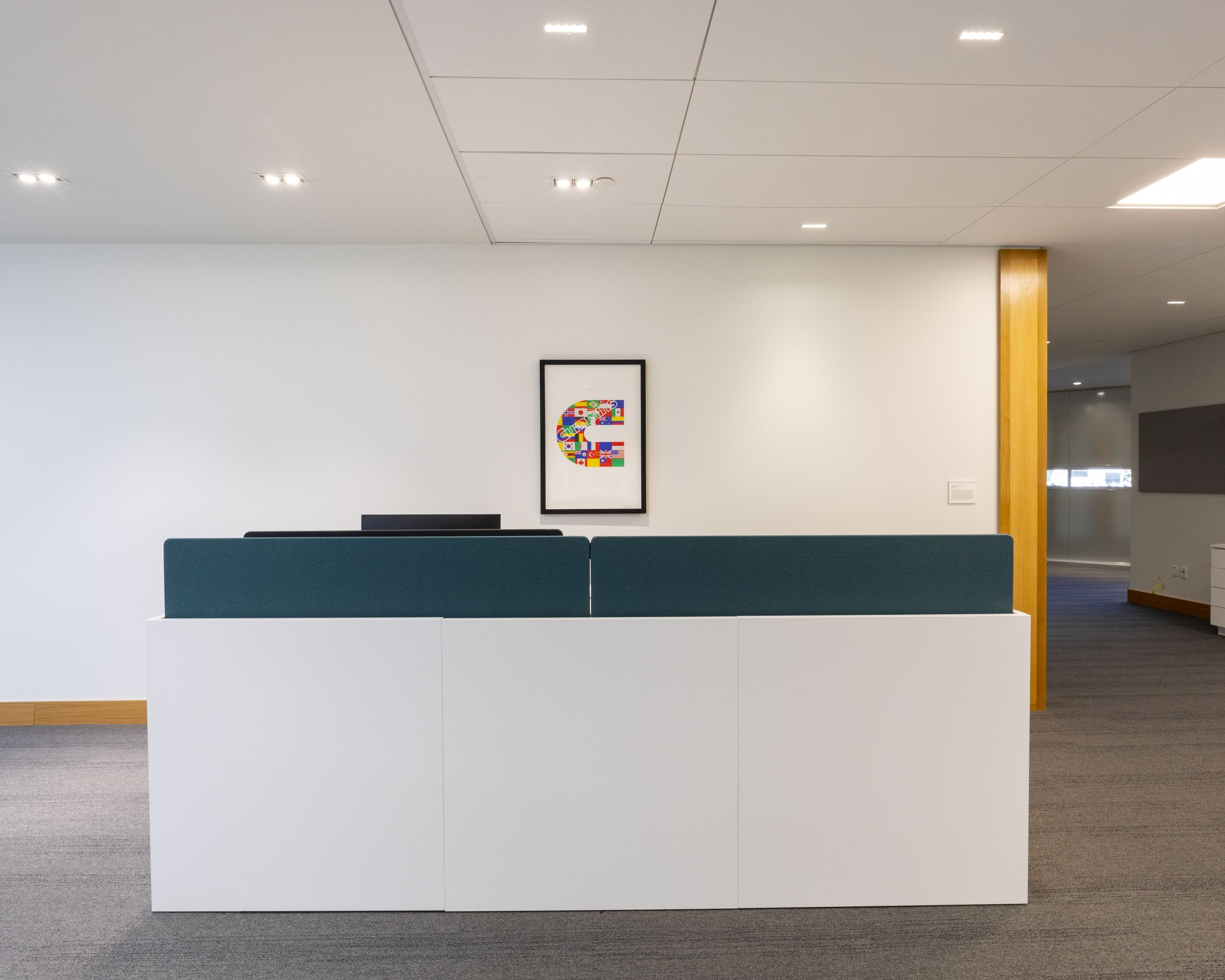


As part of the renovation of the 1980’s Kevin Roche design headquarters for Cummins Inc., Art Strategies inventoried, conserved, and redeployed historic art assets while also managing the commission of three site-specific artworks and the acquisition of another approximately 30 contemporary artworks by local as well as internationally renowned artists that connect with the company’s mission, vision, and values. The building is approximately 360,000 square feet and was renovated in two Phases. (See the next project entry for images and information on the Phase 1 art program.)
Above:
Project One Studio (American)
Reticulation, 2020
Painted 3D printed tough PLA and aluminum tubing
9 x 9 x 42 feet, total installation

The history of the company is represented through the form of the project. We explored engine components for their formal qualities, and identified the cam lobe as an interesting and simple geometry. It is a repeated component that rotates along a camshaft, and this conceptually works well with the linear nature of the site. While using this traditional combustion engine component as a basis for form, we represented innovation through the overlay of its design and fabrication. The use of parametric design software and rapid-prototyping tools allow us to represent this shape in a completely new highly complex aesthetic. A traditionally mass-manufactured component represented through mass customization…

The company continues to evolve and adapt its technology and business strategies with changing markets and other global variables. To represent this, the forms in the space gradually become more complex and refined. The cam geometry begins as very abstract on one end, and transitions into a defined, smoother shape on the other, with a much higher resolution. Additionally, we developed a custom networking technique to create each individual form. This underlying system of unique components interconnects into cohesive elements. The color transitions through all of the individual forms to be read as a whole. This is representative of the engagement of local communities across the globe and the diversity of the employees within the company.
—Project One Studio

Jacob Hashimoto (American, b. 1973)
The Hashimoto Index I, 2017
Woodblock, Igarashi Kozo Handmade Triple Thick.
7 5/8 x 7 5/8 inches each. 96 pieces in total.
Hashimoto is best known for using traditional Japanese methods to create large scale installations or “tapestries” out of thousands of hand crafted paper and wood kites. The form you see in each of these pieces references such kites. However, the patterns within each may be inspired by video games, the landscape, and cosmology, among other things.

Victor Vasarely (Hungarian, 1906-1997)
Eridan II, 1957
Oil on canvas
64 3/4 x 52 1/8 inches
Vasarely is largely considered the grandfather of the “Op” (Optical) art movement—a style of art that is interested in how we perceive color and the creation of optical illusions.
This is one of the original paintings found in the Corporate Office Building prior to the renovation of the building. It, like other artworks displayed prior to the renovation, connect to the optical nature of Roche’s original architectural design where mirrors, glass and a meandering layout left one to sort out how to situate oneself in the building. The title likely refers to a river in ancient Greece mythology.

Shinique Smith (American, b. 1971)
Soul Sight, 2017
Five-color lithograph with three-dimensional printed element and yarn
44 x 30 inches, edition of 10
Smith's work explores ideas of consumption and accumulation, and draws upon a multitude of vibrant sources, including dance, graffiti, Japanese calligraphy, and fashion.

Jason Middlebrook (American, b. 1966)
A Growing Landscape, 2018-2019
Acrylic paint on paper in two parts
10 x 53 inches and 10 x 43 inches
This is the study for the wall painting by Middlebrook, also titled A Growing Landscape, which is located on the mezzanine of this building. It was specifically commissioned for the building renovation project. This painting references movement across the global landscape, evoking a spatial optimism and an open-ended journey. The painting references Cummins’ commitment to the environment, sustainable business practices, and the global diversity of its staff and customers. By keeping the study and the wall painting together, we illustrate the iterative process of creativity and creative problem solving—a necessary component to innovation. Click here to see the full mural executed in Phase 1 of the renovation.

Kate Shepherd (American, b. 1961)
Imagined Evening Day, Blue Brick Stage, 2004
Silkscreen, edition of 45
32 3/4 x 41 1/2 inches
Shepherd’s work is about color, line, and our perception of architectural space. She creates slick monochrome surfaces interrupted by tonal color variations or painted lines. In her work from this period, two planes are brought together in much the same way the walls of a structure may come together. Her work was chosen for Cummins because it relates to drawing as the first step in ideation and innovation. Whether an artist or an engineer, people tend to write down or draw out concepts two dimensionally before moving on to generate three dimensional models or prototypes. Creative problem-solving leads to advances in all fields.

Sonia Delaunay (French-Ukrainian, 1885-1979)
Grand Carreau Rouge
Lithograph, edition 25/25
31.75 x 23 inches
Sonia Delaunay was one of the founders of Simultanism, also called Orphism, an art movement that developed in the early twentieth century, which emphasized the unification of pure abstraction and vibrant colors.

Theodore Clement (T.C.) Steele (American, 1847-1926)
Joseph I. Irwin, 1911
Oil on canvas
60 ½ x 52 ½ inches with frame
Joseph Ireland Irwin (1824 – 1910) was the great grandfather of J. Irwin Miller, the former president and chairman of Cummins Inc. Both men are part of the Irwin-Sweeney-Miller Family which is a multi-generational family of Columbus, Indiana, that has played a large part in the development of the city.
This portrait was painted by the most famous of the “Hoosier Group” artists, T. C. Steele. While known as a famous regional landscape painter, he also painted portraits of many of the state’s most important leaders such as U.S. President Benjamin Harrison, Eli Lilly, and Lyman Ayres, as well as capturing the likenesses of some of our state’s most acclaimed artists such as the poet James Whitcomb Riley.
The Cummins art program celebrates the company’s storied history while acknowledging this time in history and looking toward a bright future.

Sorel Etrog (Romanian-Canadian, 1933-2014)
Untitled
Limited edition print, edition 35/40
20.5 x 14.5 inches
One of Canada’s most renowned modern artists, Sorel Etrog’s work explores humanity in an age of technological progress and increased industrialization. Deeply influenced by Surrealism, which sought to resolve the contradiction between dream and reality, Etrog often created abstracted figures from industrial objects. In both his sculptures and works on paper, he combined the human body with the machine in order to investigate and express humanity’s condition in an environment where technology and industry are ever-present.

Gio Pomodoro (Italian, 1930-2002)
2065, c. 1968
Lithograph, edition 13/20
30 x 22 ½ inches
2068, c. 1968
Limited edition print, edition 4/20
30 ¼ x 22 ¾ inches
Frank Lobdell (American, 1921-2013)
1709 State II, 1966
Limited edition print, edition 11/20
29 ¾ x 20 inches
Pomodoro was primarily a sculptor but he also produced many works on paper. He was interested in the tension between positive and negative, light and dark, inside and outside. His work can be seen as an exploration of striking balance and creating stability.
Lobdell was a San Francisco or Bay area artist and part of a group that started to re-embrace figuration and representation in their art. He used a complex system of symbols and signs to create dream-like scenes.
Historically, these pieces were on display in either Cummins or Irwin Management buildings and were likely purchased and placed by the Miller family.

Paul Rand (American, 1914-1996)
Cummins Poster, c. 1975
Off-set lithograph
36 x 24 ½ inches
A seminal figure in graphic design in the middle of the last century, Rand created innovative visual identities for book and magazine publishers and many of America’s major corporations—including Cummins. J. Irwin Miller was introduced to Rand in 1961 and Miller quickly realized that building the right corporate brand was an investment worth making, especially since the company’s product was typically not visible. Rand continued to produce design work for Cummins for more than 30 years. This is a poster Rand created for Cummins in the 1970s which clearly underscores the company’s position as a global power leader that embraces diversity. The design was also used as the cover art for the 1991 annual report.

Peter Gee (British, 1932-2005)
Freedom and Equality, 1968
Silkscreen poster in memory of Martin Luther King Jr.
30 x 19 inches
Gee was best known for his Pop silkscreen prints. He joined the army as a graphic designer and attended the Martin School of Art in London. In 1962, Gee moved to New York. His posters and prints were exhibited in the Word and Image show in 1968 at the Museum of Modern Art alongside works by Andy Warhol and Robert Indiana. His work was featured on the cover of Time magazine during the 1960's and 1970's, and he designed packaging and posters for fashion designers such as Betsy Johnson. His work is in the permanent collections of the Museum of Modern Art, New York, The Museum of Modern Art, Kyoto, Japan, The Smithsonian, and the Victoria and Albert Museum in London.
